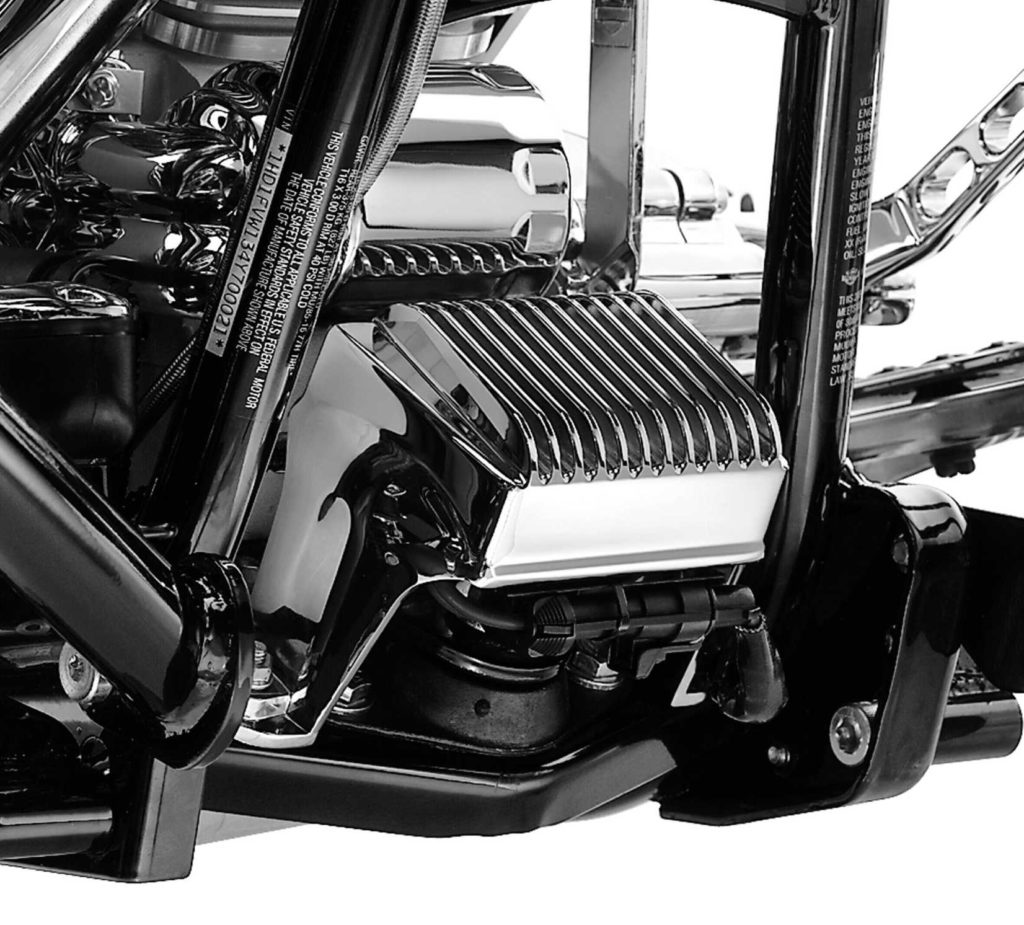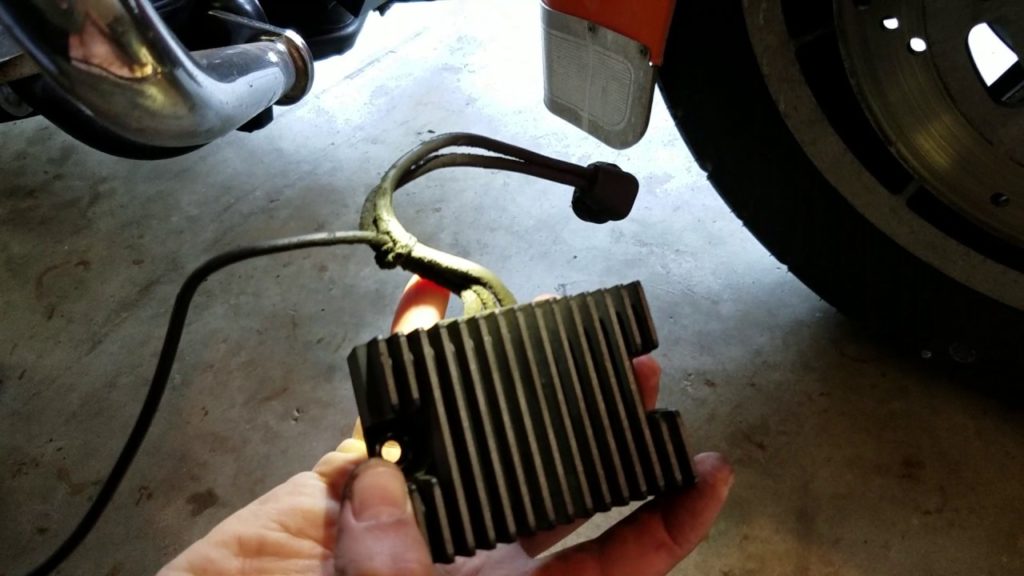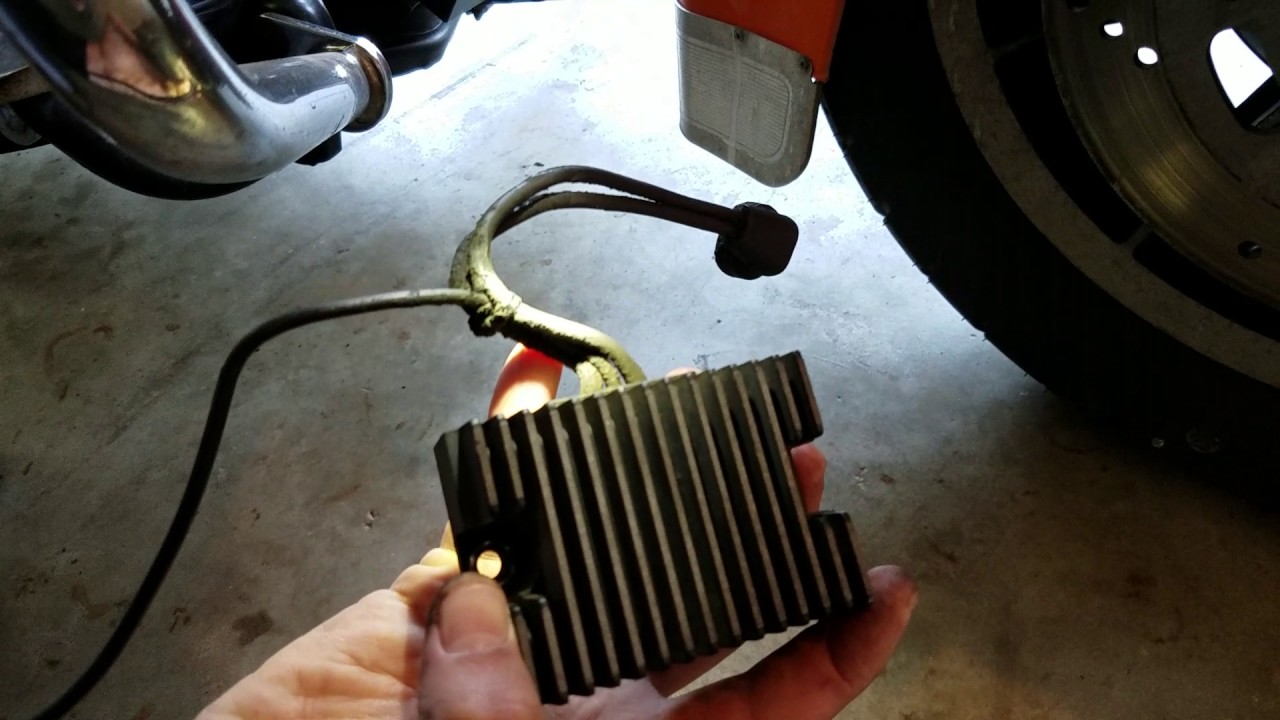A voltage regulator is an electronic device that controls the voltage of a DC circuit. It regulates all types of electric devices.
Voltage regulators protect the electrical components and also help in increasing the efficiency and lifespan of bicycles, home appliances, and motorbikes.
Signs of a faulty voltage regulator include dimmed headlights, fluctuating meter readings, and rough starts. The battery will be depleted if the voltage is less than 13 volts. When this happens, it’s only a question of time before the engine quits completely.
The most important part of a Harley Davidson is the voltage regulator which controls the amount of charge or electrical flow it makes to your battery.
The voltage regulator is a key part of your motorcycle’s electrical system, as it regulates the voltage from your battery and controls how much power goes to your engine
There are different kinds of regulators such as:
- Buck-Boost Regulator – Can maintain almost any level of the output voltage by simply varying the ratio between input and output voltages
- Stand-alone Voltage regulator – Controls output unvaryingly, regardless of input changes
- Shunt Voltage regulator – No input regulation, but high accuracy between maximum and minimum voltages
- Buck Voltage regulator – Low cost with minimum regulation
The most common voltage regulators are the ones on your bikes. A voltage regulator of a Harley Davidson controls the charge or electrical flow that goes to your battery.

The amount of power that is needed by the battery varies as the engine heats up and cools down, but a Harley Davidson voltage controller regulates this automatically without any problems.
There are different signs of a bad voltage regulator of Harley Davidson motorcycle:
Signs include slow cranking or difficult starting, dim headlights or dashboard lights at night, trouble shifting gears smoothly and quickly (especially when going up hills), loss of power when accelerating, and a loud ticking or whining noise coming from the regulator (if applicable).
- It takes more time than usual for the bike to start when you turn it on. This can be due to either a loose connection or a dead battery.
- If you’ve had your motorcycle for some time and notice more frequent battery failure, then check if there’s anything wrong with your voltage regulator.
- A whirring noise coming from somewhere near the battery is also a sign of your voltage regulator not working right. This might be due to loose connections or burnt-out fuses.
- Your engine does not start when you turn on the ignition and there are no warning signs like burning smells or sparks in between (before the motorcycle fails to start again.)

This can be because of low charge in your battery, faulty or broken wiring, or corroded points along the ignition circuit. Now this calls for an inspection by a professional mechanic who can check what exactly has gone wrong.
Harley Davidson Voltage Regulators are very important parts of every bikes’ system and if they don’t work properly your bike will fail to start. If you are facing issues with the starting of your bike, an inspection by a professional is required to determine what exactly went wrong.
Once that problem has been taken care of, you can either do the repairs on your own or take it to a Harley Davidson dealership for maintenance.
Table of Contents
What does a voltage regulator on a Harley do?
Harley Davidson is a name that has transcended the motorcycle industry and stands for decades of quality and great riding.
Their motorcycles are known for their powerful engines, and while they may be high maintenance, they run well and can last for years with proper care.
However, there is one part of your Harley that you might have never paid attention to the voltage regulator.
A voltage regulator on a Harley ensures that there is no “spike” in power, which can cause damage to your motorcycle. In addition to causing damage, surges in power from the battery can also have an effect on how long it takes for your key to turn or even prevent you from being able to turn it at all.
Without the voltage regulator, the battery will have a spike in power for a brief second when you first turn on your motorcycle. This surge is what can cause the engine to not start, so it’s important that your Harley has this fine-tuning equipment.
The voltage regulator also ensures that there are no changes in power as you run through different components of your ride.
For example, if there was no resistor to monitor how much charge gets used up as you use different features of your Harley’s electronics, then they could drain quickly and leave you stranded without enough power to start up again.
Can you start a Harley Davidson motorcycle with a damaged voltage regulator?
Whether you are a proud Harley owner or not, there’s no denying that the iconic motorcycles built by the company are some of the most powerful bikes in history.
But what can you do if your bike is in need of repairs? Harley Davidson offers a replacement kit for voltage regulators, but it’s usually unnecessary to replace the whole thing.
A faulty voltage regulator prevents the battery from charging up and eventually drains the charge out of the battery. Because motorcycles require battery power to start them up, a defective rectifier will sooner or later cause the motorcycle to fail to start.
Here we’ll explore the different ways you can fix your bike and still start it up without much hassle at all!
The easiest way to determine whether or not you have any problems with your voltage regulator is simply finding out what kinds of symptoms are being displayed when attempting to start up your motorcycle.
If either your speedometer or tachometer doesn’t work properly, this implies that one of these two components has been affected by the damage.
But what if you have a damaged voltage regulator and your speedometer isn’t working?
In this situation there are two possible explanations for this symptom: either it’s been damaged from the voltage regulator itself, or that there is another source of trouble that has caused both the voltage regulator to be broken as well as your speedometer not functioning properly.
In these cases, it’s much easier to take a look at your tachometer to see whether or not it’s working since it requires less electrical power than a speedometer does.
If both of these indicators aren’t reading anything at all, then this indicates an issue with either your battery or wiring harness which can be extremely dangerous for obvious reasons when attempting to start up the bike.
If neither of these gauges is functional, then there’s still time to check whether or not your voltage regulator is having any problems by doing a quick voltage test on the battery.
A healthy battery will generally read at 12 volts when off and about 14 volts when it is in use. If you find that your readings are significantly lower than what they should be, this implies that you need to either recharge your battery or replace it altogether.
Voltage regulators can no longer be repaired once they have been damaged because their circuitry has become too far degraded to continue functioning properly.
Once this component fails completely, it will need to be completely replaced with an entirely new piece in order for the motorcycle to function properly.
If your voltage regulator is broken, you have the alternative to buy a replacement kit for Harley Davidson voltage regulators in order to fix your motorcycle yourself.
But if you are not experienced enough with electrical wiring or simply do not have any time, you can also take it to a professional mechanic who will be able to provide you with an estimate beforehand without charging too much out of pocket.
There are other possible reasons that could cause both your speedometer and tachometer to read incorrectly besides completely destroying your voltage regulator.
If this is the case, then it might be necessary to take apart the speedometer cluster itself in order to get rid of any dirt or debris that may have gotten stuck inside which would prevent precise readings from taking place.
This is why it’s crucial to take apart your speedometer cluster and clean out any possible problems before beginning any voltage tests.
If you have already gone through this process of eliminating the factor of your speedometer being inaccurate, then it would be safe to assume that you now have nothing left but a voltage regulator malfunction on your hands.
So what are you supposed to do if the tachometer isn’t working? The simple answer is that you can try using either an external or internal tachometer in order to test whether or not the issue has anything to do with damage to your engine itself rather than just issues with your wiring harness or battery.
There are plenty of affordable tachometers one can buy online that range from about $20 all the way up into the hundreds that would be more than capable of providing you with an accurate reading.
Once you have tested whether or not your tachometer is working, it’s time to check on things like your brakes and horn as well since these are incredibly important safety precautions.
If your brake pads are worn down past their maximum threshold, then this might be another explanation for why your speedometer isn’t functioning properly which is also an issue that requires immediate attention before attempting any voltage tests on the system.
With a broken voltage regulator, there’s no need to spend even more money trying to rectify the problem by purchasing replacement kits for Harley Davidson voltage regulators. There are plenty of ways that you can get your bike up and running again without spending a penny more.
All you need to do is clean out the speedometer cluster itself by taking it apart and eliminating any dirt or debris that may have accumulated inside and then test whether or not your tachometer is reading correctly with an external or internal one.
If there’s still no reading, then you’ll want to test whether or not your wiring harness and battery are working properly in order to rule out these factors of damage.
Once your voltage regulator has been repaired, you should be able to start up your Harley Davidson motorcycle with little issues from here on out!
How long do Harley voltage regulators last?
Harley voltage regulators are built for a pretty long functional life, so you don’t need to worry too much about replacing it any time soon. After all, these parts are fairly robust and can withstand a lot of wear and tear over the years.
According to WikiHow, voltage regulators are designed to maintain constant output voltage in an alternating current circuit with respect to varying input voltages or load currents.
What this really means is that Harley Voltage Regulators help your bike run at its proper running temperature when there are changes in the weather outside, or when you have added accessories to your bike after it has been purchased.
This is especially important if you live in areas where the seasons change drastically – like up north where it’s cold during winter but hot and sunny during the summer.
The job of a Harley Voltage Regulator is to provide a steady, consistent voltage and current flow to all of your electrical components (lights, radio, etc.), allowing them to operate as they should under different conditions.
A Harley Voltage Regulator does this by stepping down the voltage from the battery to make sure that it’s safe for all of the components on your motorcycle.
Basically, it ensures that your engine runs properly and efficiently with no hiccups along the way. This will keep you running smoothly every time you hit the open road.
After all, if you lived in an area where there was constant temperature year-round, you wouldn’t need one because everything would be properly heated or cooled at all times – which would be a lot less work for you and your Harley Voltage Regulator.
In general, Harley Voltage Regulators have a pretty long functional life. However, it is important to note that as time goes on, they will start to show their age as well as have more problems as they age.
How to fix a bad voltage regulator?
The voltage regulator is the device that regulates the amount of voltage in your car’s electrical system. If it goes bad, then you’ll need to replace it with a new one. Follow these instructions for removing and installing a new one-step by step!
Tools Needed: A basic toolset. This consists of sockets, wrenches, screwdrivers, and the like. Pliers are also helpful to pull out hoses and clips. A voltage regulator is relatively small (unlike your car’s engine) so you should only need one or two tools that can be fitted with a socket or box end.
The voltage regulator is a specific part of a bike’s electrical system that controls the flow of electricity going to the battery.
This component is vital for your bike’s battery because it keeps a steady amount of power going into it. When this regulator breaks down or malfunctions, the problem can affect the various components of your electrical system and eventually harm other parts on your motorcycle such as headlights, turn signals, and startup.
If you find yourself in this situation, don’t panic! You can easily fix bad voltage regulator with step by step guide below:
- To get ready for repair job on voltage regulator, you need to disconnect all cables from the faulty voltage regulator; both negative and positive cables should be removed. After that remove bolts which holds the battery in place, next step is to disconnect battery from electric system.
- When the battery is safe and secure you can now undo bolts which are holding regulator in its place. Now it’s time for replacement of your voltage regulator with completely new one by putting all bolts back into their initial places.
- Finally reconnect all cables and put on positive cable first before negative cable; make sure that you don’t cross thread them when connecting (positive cable goes closest to starter).
